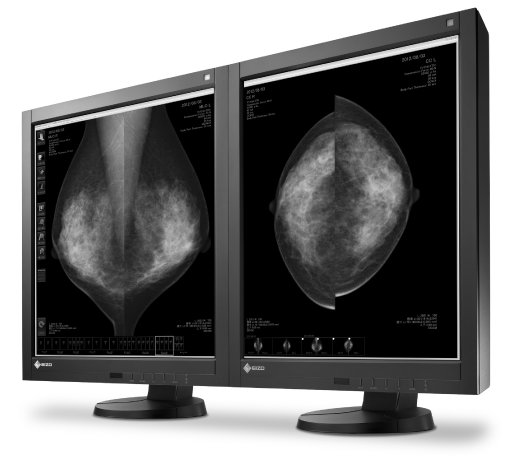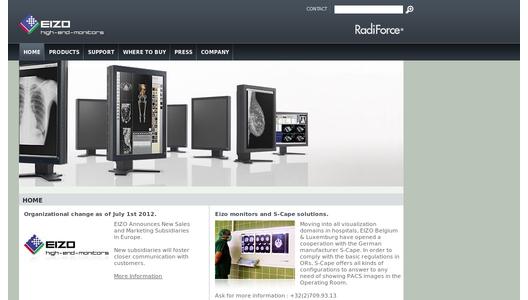As hospitals continue to switch to a filmless environment, doctors, nurses, and radiologists are spending more time working with monitors and require monitors that offer long-term quality and reliability. To meet this requirement, EIZO equipped the RadiForce GX540 with a LED backlight. LED-backlit monitors ensure stable and reliable performance needed in diagnostic monitors while increasing the service life since LEDs deteriorate far slower than traditional CCFL (cold cathode fluorescent lamp) backlights. EIZO offers a 5 year full warranty for the GX540, which includes the recommended brightness of 500 cd/sqm.
With energy-efficient LED backlights, the monitors achieve a reduction in power consumption of approximately 20 to 25% compared to the same size monitor with a conventional CCFL backlight. Much of the power consumed is converted into heat and escapes into the air. For this reason, when many monitors are installed, particularly in a small space, the temperature in the room benefits from LED backlight because of less warming.
Like all RadiForce diagnostic monitors, the grayscale tones for each RadiForce GX540 unit are adjusted at the factory to comply with DICOM Part 14. For quality control over its lifetime, the RadiForce GX540 includes an Integrated Front Sensor to provide independent verification measurement of the grayscale tones and to perform calibration compliant to DICOM Part 14. By installing the bundled RadiCS LE software, the Integrated Front Sensor and RadiCS SelfQC function allows QC tasks to be performed by the monitor itself even when the connected workstation is switched off. This cuts monitor quality control workload and maintenance costs.
The RadiForce GX540 also comes with an integrated presence sensor that offers convenience and energy savings. The presence sensor will prompt the monitor to switch to power save mode when it detects the user is away from the monitor and then resume normal operation when the user returns. Furthermore, the sensor determines whether to start QC tasks such as calibration at scheduled times. If the user is working, then the task will only be performed once the user has moved away from the monitor.


